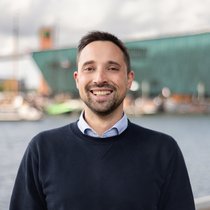Petar is enthusiastic about using data and analytic tools in an evidence-based approach to solving complex problems in urban settings. He combines his knowledge, ideas, and visualization skills to create valuable solutions and products. He has a background in urban planning and has gained experience working in the fields of urban design, mobility, and sustainability fields.
He works as a researcher at TU Delft on the project "Industrialized modular and low emission high-rise construction in the G4 cities". The project aims to ensure emission reduction through a set of partial solutions in collaboration with diverse stakeholders focusing on construction processes and logistics. Together with his project team, he is developing a strategy and a spatial model to test future scenarios on the case study of Amsterdam.
As a research fellow at AMS Institute, he represents a bond between these institutions and participates in the research fellow diverse activities.
Petar is enthralled by the institute's integrated scientific approach, where Amsterdam serves as a city lab. According to Petar, the implementation of these ideas and solutions is crucial. His project aims to contribute to the air quality by setting up a network of ‘construction hubs’ for zero-emission logistics and also increase circularity by regaining and reusing biobased materials for construction.
Petar graduated from a double-degree program at TU in Vienna and Tongji University in Shanghai. Petar is particularly interested in aspects of smart urban mobility. His previous research was on the emerging topic of “15-Minute City”. Moreover, Petar is passionate about urban photography and modern architecture, moreover, he enjoys exploring the world of data and visualizing it in a pretty way. His most recent experience was gained during a seven-month internship at AMS Institute as part of Smart Urban Mobility team.
“In the years to come, there are certain characteristics that we aim to achieve in urban construction, namely biobased materials, industrialized processes, modular design, zero emissions, and circularity. It has been given the name BIMZEC, which represents our vision for the future of city construction.”
Petar Koljensic
Research Fellow
